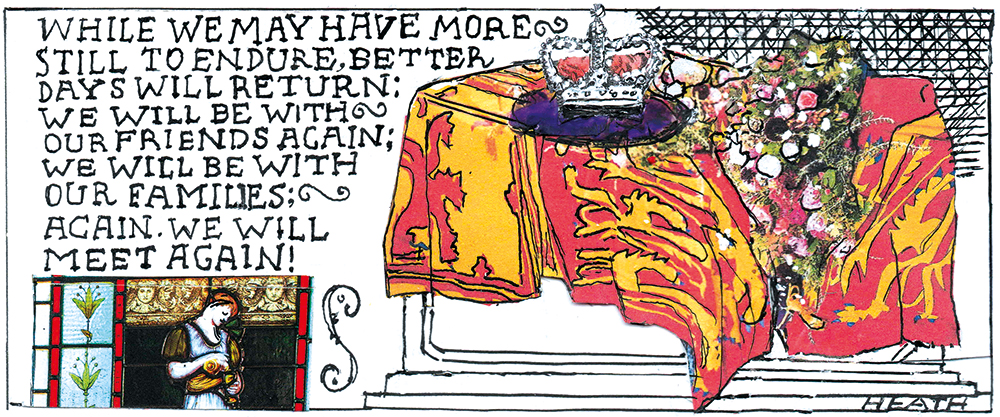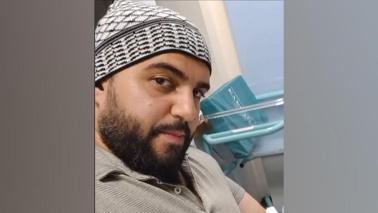Driving up Royal Deeside last weekend, I spotted a harvest under way on that magical Hobbit-esque green/gold/purple hillscape. It all came flooding back. One year on from the death of Elizabeth II, it’s the sight of the tractors lined up next to the A93 which remains among the most enduring images. It wasn’t just that they all had their shovels dipped in tribute, like the dockers’ cranes saluting the Havengore as it carried Churchill down the Thames in 1965. It was the fact that they were all spotless. At the busiest time of the year in this lush agricultural belt of Aberdeenshire, farmers had paused their harvesting, taken their machines out of the fields and given them a very thorough hosing down before lining up for hours to salute the late Queen. They did it because, to them, Elizabeth II – staunch countrywoman, the most Scottish monarch since James I and VI and the first British monarch to die in Scotland – had been ‘one of us’.
How should we remember her? I do not envy Lord (Robin) Janvrin, her former private secretary, who is to lead the committee charged with choosing the appropriate memorials. Late of the Foreign Office, he will need all his diplomatic skills to handle the cascade of ‘helpful’ ideas which will land on his desk between now and his deadline, Her Late Majesty’s centenary in 2026. He may start by ruling out some of the obvious ones. Certainly no airport (she has a Heathrow terminal already). We do not want future generations wailing: ‘I lost my bags at QE2.’ Nor a landmass. The government named 170,000 square miles of Antarctica after her in 2012 and, besides, that sort of thing might seem a tad imperial for modern tastes (it might be a Labour government signing off on this one). The late Queen’s attitude to gifts is instructive. After gratefully receiving a Canadian totem pole so huge that it required several days and the Royal Engineers just to get it from the docks to Windsor Great Park (it’s still there), she let it be known that, in future, she would prefer a scholarship fund. I suspect she would also want something which includes the late Duke of Edinburgh. The V&A is now part of the language. Let there be some sort of ‘E&P’.
People want to know how the new reign differs from the old. Monarchy is about continuity, so the answer has to be: not too much. But there are always tweaks. Rishi Sunak saw one last weekend. For years, the annual visit of the prime minister was the cue for the Duke of Edinburgh to fire up the barbecue somewhere on the estate. David Cameron still remembers his grilled grouse. Charles III, however, is less keen on serving up charred offerings in a bothy and the midges have been awful this summer. The Sunaks dined at the castle.
As for the anniversary, I expect the King will observe it just like Elizabeth II would mark her own Accession Day, even into old age. She wanted to be in the house where her predecessor had died, to attend a small service and to keep public appearances to a minimum. All eyes on Crathie Kirk. Believe it or not, another major royal landmark looms. Two months from now, the King turns 75. After 15 months of unparalleled royal activity (jubilee, funeral, coronation), he is well aware of the threat of public fatigue. There will be no big bash. The late Queen ignored her 75th too (her Golden Jubilee was less than a year away). Her 70th was much the same. When a commemorative stamp was proposed, she binned it on the grounds that there should be no ‘fuss’.
The King and Queen Camilla are now off to France at the second attempt. So when will he finally visit the Commonwealth – of which he is head? Kenya has been widely tipped for his first tour. If so, a trip to Treetops would be poignant (it was the treehouse in which his mother became Queen). However, the original tree is long gone and modern visits are about looking ahead, not nostalgia tourism. The King will still have plenty of memories of his own, though. It was on his first visit to Kenya that he held his very first investiture on 16 February 1971, knighting the president of the East African Court of Appeal on the Queen’s behalf. He also acquired his first beard while on his first (walking) safari during which he had his first near-death experience – being charged by a bull elephant. ‘I was rooted to the spot and unable to make my legs respond,’ he wrote in his journal years later. ‘The elephant was so taken aback by my not running away that its charge was reversed. Everybody came up and said how brave I’d been.’ Just as well. Had the elephant not had second thoughts, we would now be about to mark the first anniversary of King Andrew.






Comments